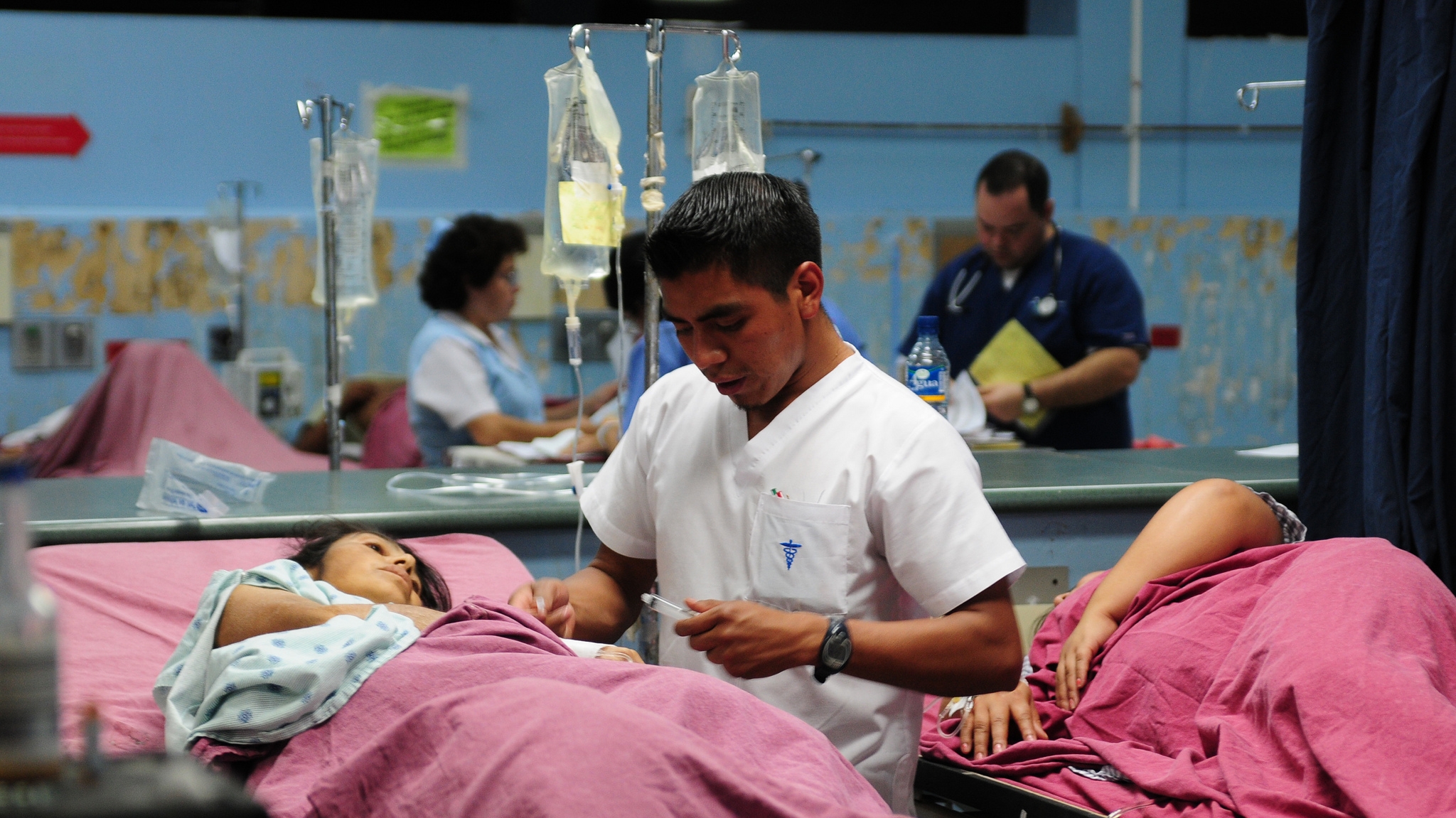Over the past quarter century, the countries of Latin America and the Caribbean (LAC) have experienced rising incomes, with corresponding reductions in levels of poverty. At the same time, countries have achieved improvements in health and well-being for all segments of the population: average life expectancy has risen significantly, more children live to see their first and fifth birthdays, and fewer mothers are dying from complications of childbirth.
Nonetheless, health inequities persist between and within countries, and some health outcomes are still unacceptable, challenging health systems to develop innovative approaches that will improve responsiveness and address people’s changing needs.
Universal health coverage (UHC) has been at the center of the global public health agenda in recent years. As one of the overarching goals of health systems, UHC provides countries a way forward to address unmet needs and health inequities. The World Bank has embraced UHC as part of its mission to eliminate absolute poverty by 2030 and to boost shared prosperity.
The Pan American Health Organization (PAHO) in October 2014 adopted a regional Strategy for Universal Access to Health and Universal Health Coverage, which expresses the commitment of PAHO Member States to strengthen health systems, expand access to comprehensive quality health services, provide financial protection, and adopt integrated, comprehensive policies to address the social determinants of health and health inequities. For the past two years, the World Bank and PAHO have engaged in a collaborative effort to examine policies and initiatives in LAC aimed at achieving UHC.
This report is one product of that collaboration. It includes contributions from professionals from both institutions and it has received the support of researchers from several countries in the region. The report provides insight on different approaches and progress being made by selected countries over the past quarter century to increase population coverage, services covered, and financial protection, with a special focus on reductions in health inequities.
The report shows that countries have made meaningful progress toward UHC, with increases in population coverage and access to health services, a rise in public spending on health, and a decline in out-of-pocket payments, which can result in catastrophic spending and impoverishment for many households. Expanded health services, including preventive, curative, and specialized services, have also been observed in most countries, and service utilization has become less inequitable over the years. The gap between rich and poor has also narrowed on a number of key health outcomes.
Despite the advances, much remains to be done to close the equity gap and address new health challenges in the region. As many countries in LAC adopt policies, plans, and strategies to move rapidly toward universal access to health and universal health coverage, continuous assessment of progress will be required to build the evidence base to inform policies and decision-making processes at the national level.
Priority should be placed on the analysis of critical factors such as governance and stewardship in health, social participation and accountability, equity in access to quality services, health financing, and the intersectoral approach to address the social determinants of health, among others. National policies and strategies promoting universal access to health and universal health coverage should be firmly anchored in the premise that the enjoyment of the highest attainable standard of health is one of the fundamental rights of every human being.
This report reaffirms that policies oriented toward the achievement of UHC can improve equity, promote development, and increase social cohesion, ultimately leading to improved health and well-being for all.
